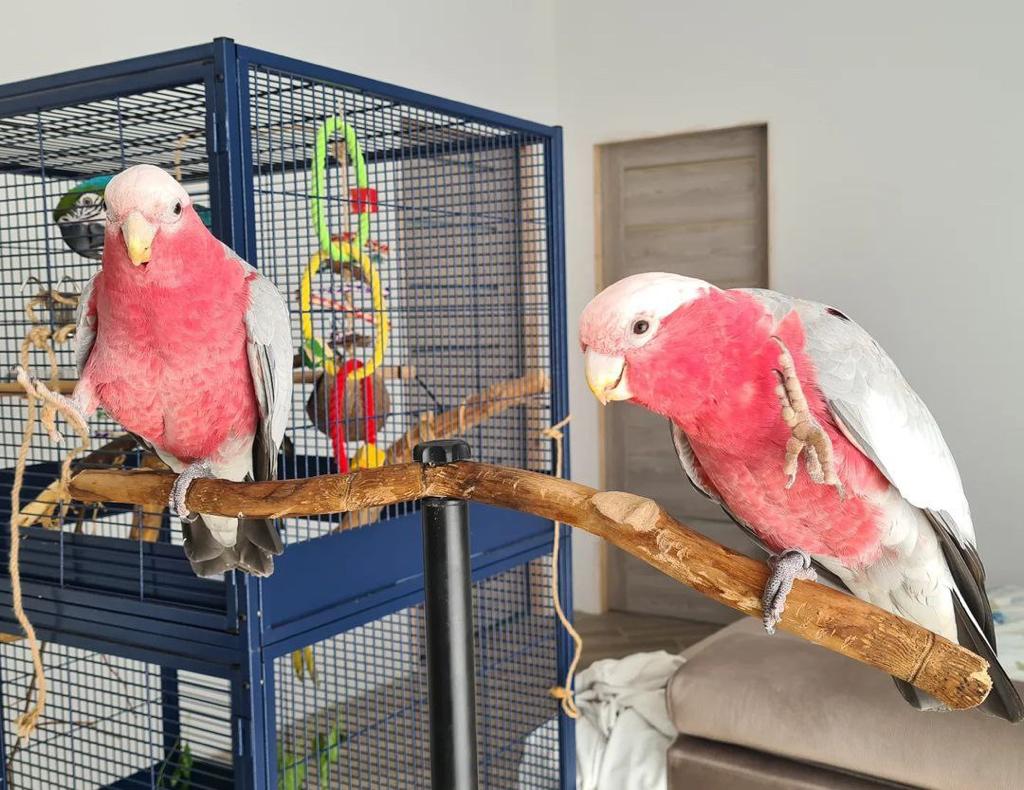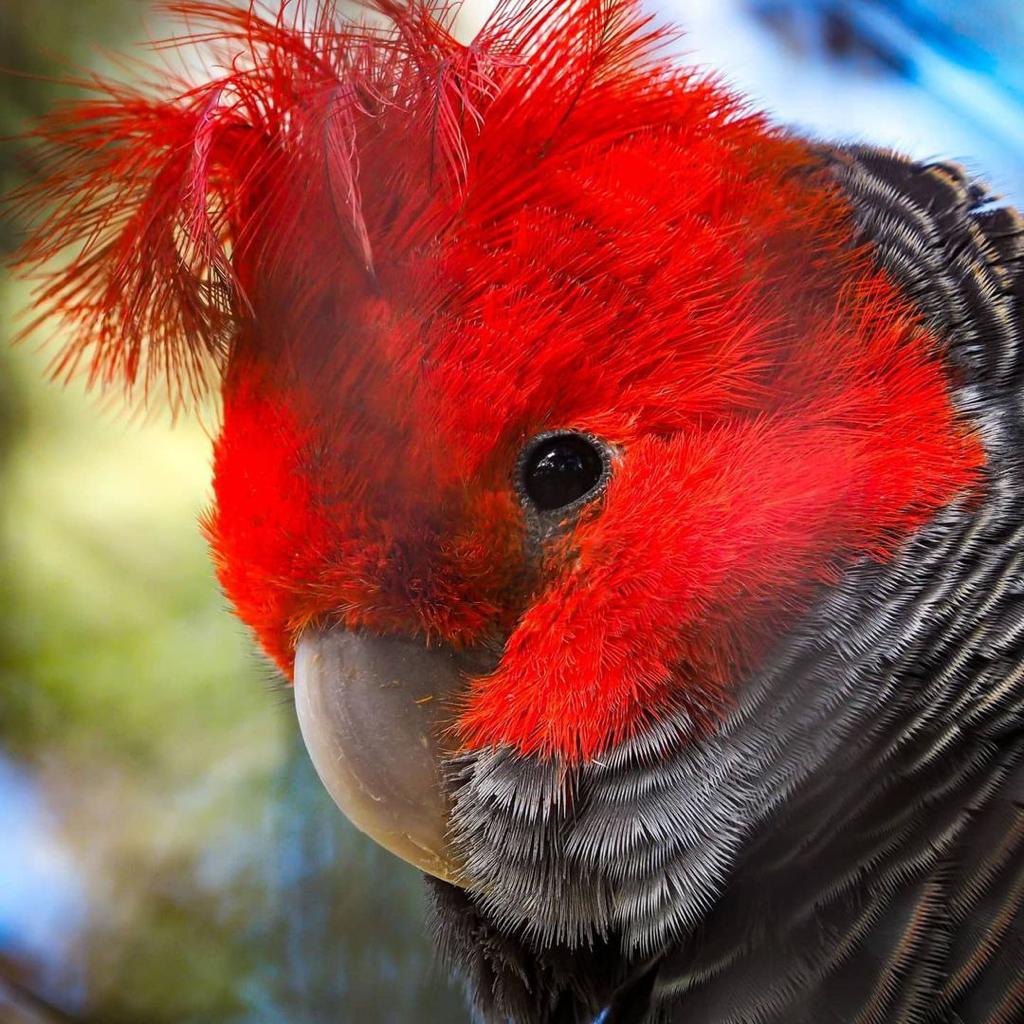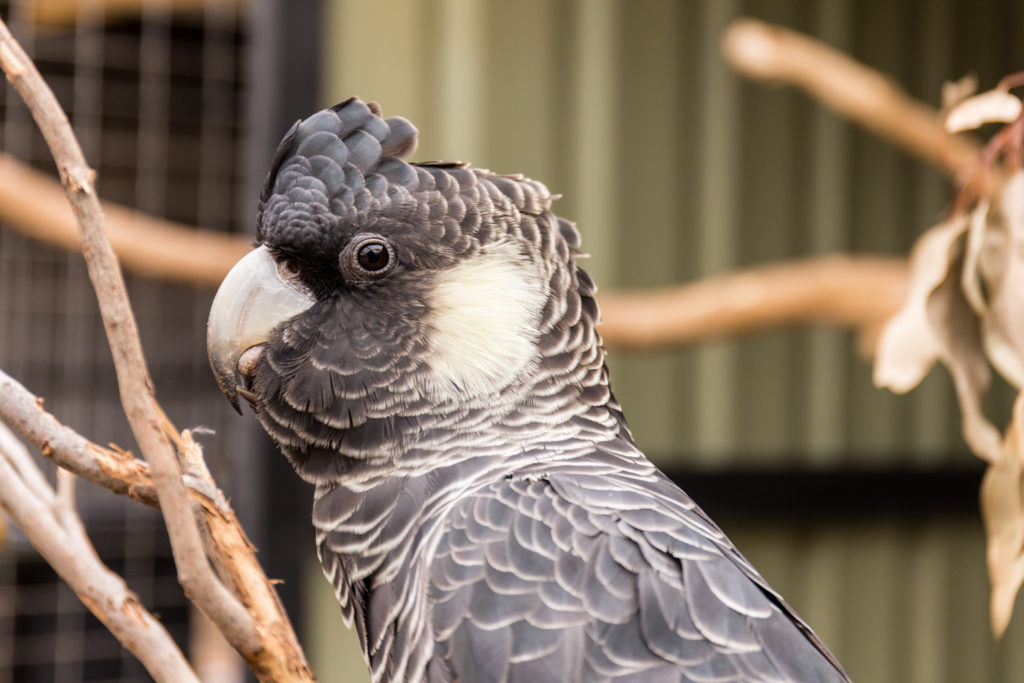Cockatoo
Exploring the Fascinating World of Types of Cockatoos
Ever wondered about the different types of cockatoos out there?
You’re in for a treat.
Let’s dive into the world of these magnificent birds, starting with the impressive Black Palm Cockatoo.
1. Black Palm Cockatoo: The Majestic Giant
| Species Overview | |
|---|---|
| Length | 55-65 cm (22-26 inches) |
| Weight | 910-1200 g (2-2.6 lbs) |
| Lifespan | 40-60 years in captivity |
| Native Habitat | New Guinea and Cape York, Australia |
Physical Characteristics:
- Massive black beak
- Distinctive red cheek patches
- Large, movable crest
- Powerful claws
These birds are the largest of the cockatoo species.
They’re known for their intelligence and their ability to use tools in the wild.
Black Palm Cockatoos are rare in captivity due to their specific needs.
They require a lot of space and attention.
Their powerful beaks can easily destroy standard cages, so they need specialized housing.
In the wild, they’re often seen using sticks to drum on trees as part of their mating ritual.
2. Sulphur-crested Cockatoo: The Iconic Australian
| Species Overview | |
|---|---|
| Length | 44-55 cm (17-22 inches) |
| Weight | 815-975 g (1.8-2.1 lbs) |
| Lifespan | 20-40 years in captivity |
| Native Habitat | Australia and New Guinea |
Physical Characteristics:
- Striking white plumage
- Bright yellow crest
- Blue eye-ring
- Grey legs
These birds are incredibly popular in the pet trade.
They’re known for their playful personalities and their ability to mimic human speech.
Sulphur-crested Cockatoos are highly intelligent and need plenty of mental stimulation.
In the wild, they’re often seen in large flocks, sometimes numbering in the hundreds.
They can be quite noisy, with a loud, harsh call that carries for long distances.
3. Moluccan Cockatoo: The Salmon-crested Beauty
| Species Overview | |
|---|---|
| Length | 46-52 cm (18-20.5 inches) |
| Weight | 850-950 g (1.9-2.1 lbs) |
| Lifespan | 40-60 years in captivity |
| Native Habitat | South Moluccas, Indonesia |
Physical Characteristics:
- White body plumage
- Salmon-pink crest
- Pale salmon tinge on the breast and underwing
- Black beak
Moluccan Cockatoos are known for their affectionate nature.
They’re often called “Velcro birds” because of their desire to be close to their owners.
These birds are highly intelligent and can learn complex tricks.
They require a lot of attention and can become destructive if bored.
In the wild, they’re endangered due to habitat loss and trapping for the pet trade.
4. Goffin’s Cockatoo: The Pocket-sized Genius
| Species Overview | |
|---|---|
| Length | 31-35 cm (12-14 inches) |
| Weight | 250-350 g (0.55-0.77 lbs) |
| Lifespan | 40-50 years in captivity |
| Native Habitat | Tanimbar Islands, Indonesia |
Physical Characteristics:
- White plumage with pink tinges
- Small, rounded crest
- Blue eye-ring
- Light grey beak
Goffin’s Cockatoos are known for their problem-solving abilities.
They’ve been observed using tools and solving complex puzzles in scientific studies.
These birds are playful and energetic, often described as having a “eternal toddler” personality.
They’re smaller than many other cockatoo species, making them popular pets.
However, they still require plenty of attention and mental stimulation.
5. Rose-breasted Cockatoo: The Pink Charmer
| Species Overview | |
|---|---|
| Length | 35-38 cm (14-15 inches) |
| Weight | 270-350 g (0.6-0.77 lbs) |
| Lifespan | 40-50 years in captivity |
| Native Habitat | Australia |
Physical Characteristics:
- Grey back, wings, and tail
- Pink face and breast
- White crest
- Grey legs
Rose-breasted Cockatoos are known for their playful and sociable nature.
They’re often seen in large flocks in the wild, sometimes numbering in the thousands.
These birds are intelligent and can learn to mimic human speech.
They’re popular pets but can be quite noisy.
In Australia, they’re sometimes considered agricultural pests due to their fondness for grain crops.
6. Yellow-tailed Black Cockatoo: The Forest Giant
Buy Yellow-tailed Black Cockatoo
| Species Overview | |
|---|---|
| Length | 55-65 cm (22-26 inches) |
| Weight | 750-900 g (1.65-2 lbs) |
| Lifespan | 50-60 years in captivity |
| Native Habitat | Eastern and southern Australia |
Physical Characteristics:
- Mostly black plumage
- Yellow cheek patches and tail bands
- Small crest
- Large, curved beak
Yellow-tailed Black Cockatoos are known for their distinctive, mournful call.
They’re often seen in pairs or small family groups.
These birds have a specialized diet, feeding on wood-boring grubs and seeds from native trees.
They’re less common in captivity than some other cockatoo species.
In the wild, they play an important role in forest ecosystems by helping to control insect populations.
7. Major Mitchell’s Cockatoo: The Pink Princess
| Species Overview | |
|---|---|
| Length | 33-37 cm (13-14.5 inches) |
| Weight | 370-425 g (0.8-0.94 lbs) |
| Lifespan | 40-60 years in captivity |
| Native Habitat | Inland Australia |
Physical Characteristics:
- Salmon-pink body plumage
- White wings and tail
- Red and yellow banded crest
- Pale grey beak
Major Mitchell’s Cockatoos are known for their striking appearance.
They have one of the most colorful crests of any cockatoo species.
These birds are less common in captivity than some other cockatoos.
They’re known for being gentle and affectionate with their owners.
In the wild, they’re found in arid and semi-arid regions of Australia.
8. Gang-gang Cockatoo: The Charming Oddball
| Species Overview | |
|---|---|
| Length | 32-37 cm (13-14.5 inches) |
| Weight | 250-350 g (0.55-0.77 lbs) |
| Lifespan | 40-50 years in captivity |
| Native Habitat | Southeastern Australia |
Physical Characteristics:
- Grey body plumage
- Males have a distinctive red head and crest
- Females have a grey head with red belly barring
- Curved beak
Gang-gang Cockatoos are known for their unique call, which sounds like a creaky gate.
They’re less noisy than many other cockatoo species.
These birds are excellent climbers and are often seen hanging upside down to feed.
They’re not commonly kept as pets and are protected in their native range.
In the wild, they play an important role in seed dispersal for native Australian plants.
9. Umbrella Cockatoo: The Gentle Giant
| Species Overview | |
|---|---|
| Length | 45-50 cm (18-20 inches) |
| Weight | 750-900 g (1.65-2 lbs) |
| Lifespan | 50-60 years in captivity |
| Native Habitat | Islands of Indonesia |
Physical Characteristics:
- All-white plumage
- Large, rounded crest
- Black beak
- Blue eye-ring
Umbrella Cockatoos are known for their affectionate nature.
They’re often called “Velcro birds” because of their desire to be close to their owners.
These birds are highly intelligent and can learn to mimic human speech.
They require a lot of attention and can become destructive if bored.
In the wild, they’re endangered due to habitat loss and trapping for the pet trade.
10. Tanimbar Corella Cockatoo: The Island Specialist
| Species Overview | |
|---|---|
| Length | 33-35 cm (13-14 inches) |
| Weight | 300-400 g (0.66-0.88 lbs) |
| Lifespan | 40-50 years in captivity |
| Native Habitat | Tanimbar Islands, Indonesia |
Physical Characteristics:
- White plumage
- Pale yellow underwing and tail feathers
- Small, pale yellow crest
- Pale blue eye-ring
Tanimbar Corellas are known for their gentle nature.
They’re smaller than many other cockatoo species, making them easier to house.
These birds are intelligent and can learn tricks and mimicry.
In the wild, they’re found only on a small group of islands, making them vulnerable to habitat loss.
11. Red-tailed Black Cockatoo: The Striking Contrast
| Species Overview | |
|---|---|
| Length | 55-60 cm (22-24 inches) |
| Weight | 610-870 g (1.3-1.9 lbs) |
| Lifespan | 50-60 years in captivity |
| Native Habitat | Australia |
Physical Characteristics:
- Glossy black plumage
- Bright red panels in tail
- Males have red bands on tail feathers
- Females have yellow spots on head and wings
Red-tailed Black Cockatoos are known for their powerful beaks.
They feed on hard seeds and nuts that other birds can’t crack.
These birds have a distinctive, harsh call.
In the wild, some subspecies are threatened due to habitat loss.
12. Carnaby’s Black Cockatoo: The Endangered Beauty
| Species Overview | |
|---|---|
| Length | 54-56 cm (21-22 inches) |
| Weight | 520-790 g (1.1-1.7 lbs) |
| Lifespan | 40-50 years in captivity |
| Native Habitat | Southwest Australia |
Physical Characteristics:
- Mostly black plumage
- White cheek patches
- White bands on tail feathers
- Large, curved beak
Carnaby’s Black Cockatoos are known for their specialized diet.
They feed primarily on seeds from native plants, especially Banksia and Hakea species.
These birds are endangered due to habitat loss and competition for nesting sites.
They play a crucial role in their ecosystem as seed dispersers.
Conservation efforts are ongoing to protect their remaining habitat.
13. Glossy Black Cockatoo: The Quiet Achiever
| Species Overview | |
|---|---|
| Length | 45-50 cm (18-20 inches) |
| Weight | 420-450 g (0.9-1 lbs) |
| Lifespan | 40-50 years in captivity |
| Native Habitat | Eastern Australia |
Physical Characteristics:
- Brown-black plumage
- Red or yellow bands on tail (varies by subspecies)
- Males have red panels on head
- Massive, powerful beak
Glossy Black Cockatoos are known for their specialized diet.
They feed almost exclusively on seeds of Casuarina trees.
These birds are quieter and less gregarious than many other cockatoo species.
They’re vulnerable to habitat loss and are considered threatened in parts of their range.
Conservation efforts focus on protecting and restoring their food trees.
14. White Cockatoo: The Classic Beauty
| Species Overview | |
|---|---|
| Length | 46-52 cm (18-20 inches) |
| Weight | 800-900 g (1.8-2 lbs) |
| Lifespan | 40-60 years in captivity |
| Native Habitat | Indonesia |
Physical Characteristics:
- Pure white plumage
- Yellow underwing and tail feathers
- Large white crest
- Grey-black beak
White Cockatoos are known for their striking appearance and friendly personalities.
They’re popular in the pet trade due to their intelligence and ability to mimic speech.
These birds require a lot of attention and mental stimulation to thrive in captivity.
In the wild, they’re threatened by habitat loss and illegal trapping for the pet trade.
Conservation efforts are crucial for their survival in their native range.
15. Cockatiel Cockatoo: The Popular Pet
| Species Overview | |
|---|---|
| Length | 30-33 cm (12-13 inches) |
| Weight | 80-120 g (0.18-0.26 lbs) |
| Lifespan | 15-25 years in captivity |
| Native Habitat | Australia |
Physical Characteristics:
- Grey body
- White face patch
- Yellow crest and cheek patches
- Long tail feathers
Cockatiels are the smallest of the cockatoo family.
They’re popular pets due to their gentle nature and manageable size.
These birds are known for their whistling abilities and can learn to mimic tunes.
In the wild, they’re found in large flocks in arid regions of Australia.
16. Yellow-crested Cockatoo: The Endangered Beauty
| Species Overview | |
|---|---|
| Length | 33-35 cm (13-14 inches) |
| Weight | 300-400 g (0.66-0.88 lbs) |
| Lifespan | 40-60 years in captivity |
| Native Habitat | Indonesia and East Timor |
Physical Characteristics:
- White plumage
- Yellow forward-curving crest
- Pale yellow underwing and tail feathers
- Grey-black beak
Yellow-crested Cockatoos are critically endangered in the wild.
They’re known for their intelligence and ability to mimic human speech.
These birds require a lot of attention and mental stimulation in captivity.
Conservation efforts are crucial for their survival in their native habitat.
17. Salmon-crested Cockatoo: The Pink Beauty
| Species Overview | |
|---|---|
| Length | 46-52 cm (18-20.5 inches) |
| Weight | 850-950 g (1.9-2.1 lbs) |
| Lifespan | 40-60 years in captivity |
| Native Habitat | South Moluccas, Indonesia |
Physical Characteristics:
- White body plumage
- Salmon-pink crest
- Pale salmon tinge on the breast and underwing
- Black beak
Salmon-crested Cockatoos are also known as Moluccan Cockatoos.
They’re known for their affectionate nature and striking appearance.
These birds are highly intelligent and require a lot of mental stimulation.
In the wild, they’re endangered due to habitat loss and illegal trapping.
This completes the list of all cockatoo species mentioned in the product file. Each type of cockatoo has its unique characteristics and needs, contributing to the fascinating diversity within this group of birds. Understanding these different types of cockatoos helps us appreciate the variety and complexity of these remarkable creatures.
FAQs About Types of Cockatoos
- What’s the largest type of cockatoo? The Black Palm Cockatoo is the largest, measuring up to 65 cm in length.
- Which cockatoo species is best for first-time bird owners? Goffin’s Cockatoos are often recommended due to their smaller size and playful nature.
- Are all cockatoos white? No, while many are white, there are also black, grey, and pink species.
- How long do cockatoos typically live? Most cockatoos can live 40-60 years in captivity with proper care.
- Which cockatoo species are endangered? Several species are endangered, including the Moluccan Cockatoo and Carnaby’s Black Cockatoo.
From the majestic Black Palm Cockatoo to the striking Glossy Black Cockatoo, these types of cockatoos showcase the incredible diversity within this fascinating bird family.
Each species has its unique characteristics, behaviors, and needs.
Whether you’re a potential pet owner or just a bird enthusiast, understanding these different types of cockatoos can deepen your appreciation for these remarkable creatures.
Remember, while cockatoos can make wonderful companions, they’re also wild animals with complex needs.
Always do thorough research before considering a cockatoo as a pet.
And if you’re lucky enough to spot one of these amazing birds in the wild, take a moment to appreciate the beauty and diversity of the various types of cockatoos.

















